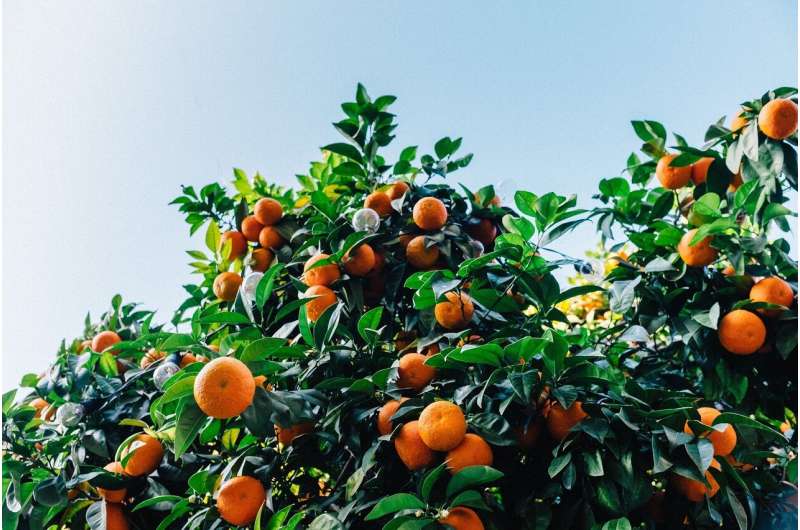Researchers in Florida have discovered a promising solution to the devastating citrus greening disease that has plagued the state’s iconic citrus industry. By studying the natural microbiome of citrus trees that exhibit tolerance to the disease, they have isolated powerful antimicrobial compounds that could lead to an effective treatment. This breakthrough has the potential to revive the struggling citrus industry and serve as a model for tackling other crop diseases. Citrus greening disease, also known as Huanglongbing (HLB), is caused by the bacterium Candidatus Liberibacter asiaticus and spread by the Asian citrus psyllid.

Utilizing the Microbiome
Fla—Scientists identified a chemical used Industry since 1940sNewswise — Gainesville, Fla–The fight against citrus greening just got a new weapon: the antibiotic enoxacin. They identified a suite of bacterial endophytes that produce unique antimicrobial compounds by examining the natural microbiome of HLB-tolerant citrus trees.
The team identified these hearty trees at Kinman Organic Farm in Clermont, Florida. Infected trees yield fewer, smaller and bitter-tasting fruits but survivor trees continued to bear healthy citrus despite infection with the HLB pathogen. After examining 342 endophytes these trees carried, the researchers uncovered five bacterial strains which make impressive antibiotics that can wipe out citrus greening bacteria in a lab setting.
A Possible Answer to the Citrus Industry Woes
The antimicrobial compounds are something of a silver lining for Florida’s citrus industry, which has been hit hard by the disease. The disease, detected in the state in 2005 for the first time, has caused production to fall by over 92% and made next season — 2022-2023 — the smallest since 1936.
At present, growers include psyllid vector control using pesticides and HLB bacteria management with antibiotics which are expensive and peril. Not only are these treatments costly, but they also present a health and an environmental risk. The research findings provide a more available and reliable remedy because the antimicrobial compounds they have discovered can be combined with water and used in low concentrations, as necessary, against citrus greening.
A Foundation to the Future of Agriculture
The findings have implications beyond citrus. However, the team has identified antimicrobial compounds that may also work against other emerging psyllid-transmitted bacterial diseases of concern to potatoes, tomatoes and carrots.
This study showcases that utilizing the plant microbiome, could be a promising perspective in intervention of crop disease in a more sustainable and eco-friendly way. The scientists are now refining and testing the antimicrobial compounds further, as well as investigating partnerships with commercial biopesticide companies to help support their development with growers. This collaboration could bring back an iconic industry in Florida — citrus — and serve as a blueprint to solve other agricultural problems as new pests emerge.
